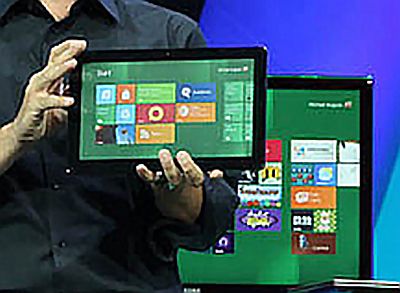Windows 8 On ARM Details Highlight Hardware Differences

Windows 8 targets ARM’s architecture in addition to Intel PCs, and Microsoft has finally detailed how this will work
Microsoft has issued some additional details about Windows on ARM, for which it uses the acronym “WOA”. The operating system on this architecture will play a vital part in the company’s long-term strategy for tablets and other mobile form factors.
When the release version of Windows 8 appears sometime in late 2012, it will come on both ARM and x86 hardware.
Separate ecosystem
Software for traditional x86/64-bit computers will not run on the tablet – a move which has brought criticism from Microsoft’s long-term partner Intel. Instead, the slates will run apps downloaded from Microsoft’s Windows Store and will be serviced through Windows Update – similar to the architecture behind Windows Phone 7, or Apple’s iOS tie-in with its App Store.
 The operating system has been redesigned to operate equally well on traditional PCs or tablets: the home screen of colourful tiles linked to applications is eminently touchable (all the better for small, portable touch-screens), and paired to a desktop with all the requisite tools for power users.
The operating system has been redesigned to operate equally well on traditional PCs or tablets: the home screen of colourful tiles linked to applications is eminently touchable (all the better for small, portable touch-screens), and paired to a desktop with all the requisite tools for power users.
Although Windows on ARM is an initiative meant to capture the tablet market, Microsoft is moving quickly to position WOA as equally capable of handling users’ productivity needs.
“Within the Windows desktop, WOA includes desktop versions of the new Microsoft Word, Excel, PowerPoint, and OneNote, codenamed Office 15,” Steven Sinofsky, president of Microsoft’s Windows and Windows Live division, wrote in a posting on the corporate Building Windows 8 blog. “WOA will be a no-compromise product for people who want to have the full benefits of familiar Office productivity software and compatibility.”
He cautioned that “WOA will not support any type of virtualisation or emulation approach, and will not enable existing x86/64 applications to be ported or run”. This is because virtualised or emulated software would result in excessive consumption of system resources like battery life and CPU. “If you need to run existing x86/64 software, then you will be best serviced with Windows 8 on x86/64.”
In other words, for those who want to make a new WOA tablet their primary productivity platform, the combination of hardware and software could fit their needs, but those power users with a substantial amount of legacy software might want to acquire a system based on x86.
Those developers who wish to port existing apps onto WOA have a couple of options. “Many apps will be best served by building new Metro-style front ends for existing data sources or applications,” Sinofsky wrote, “and communicating through a Web services API.” Those best served by this approach include “line-of-business applications and consumer Web properties”.
The other potential solution centres on “reusing large amounts of engine or runtime code, and surround that with a Metro style experience”, something he cautioned would take “some time”.
Microsoft has been working with a handful of ARM licensees, including Texas Instruments, Qualcomm and Nvida; in turn, these firms have been working with hardware manufacturers on the creation of actual devices running WOA.
Microsoft wants WOA devices to ship at the same time as PCs designed for Windows 8 on x86, and is apparently taking steps to clearly label the respective hardware so potential buyers can tell them apart.